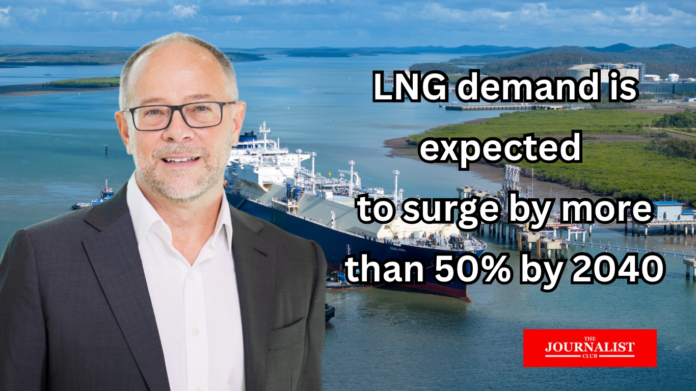

Shell plc’s 2024 outlook for the liquefied natural gas (LNG) industry reveals significant trends in the global LNG market.
Demand is expect to surge by more than 50% by 2040, driven by factors such as Asian industries switching from coal to LNG and economic growth leading to higher energy consumption.
LNG plays a crucial role in complementing renewable energy sources, such as wind and solar power, especially in countries with a high proportion of renewable energy usage due to its intermittence. Having LNG as an energy production supplement helps maintain short-term flexibility and long-term stability of supply.
Shell, one of the leading global energy companies,
shared its perspectives and updates in its LNG Outlook 2024, highlighting the demand and importance of LNG for energy security and carbon emission reduction.
The report also forecasts trends and growth opportunities for LNG in the Asia-Pacific region. This was discusse at the recent FUTURELNG ASIA: Accelerating Innovation to Drive Asia’s Energy Transition event.
LNG plays a crucial role in enhancing energy security

Mr. Jefferson Edwards, vice president, Global MarketAnalytics, Shell LNG Marketing and Trading,emphasized the importance ofLNG in the Asian region. While currently only accounting for 14% of the global natural gas consumption,LNG plays a crucial role in enhancing energy security and reducing carbon emissions simultaneously.
This is especially significant in South and Southeast Asia, where domestic natural gas production in many countries is declining.LNG is project to account for approximately 75% of all new natural gas sources in Asia until 2040 and will surpass domestic gas production as the largest energy source in Asia by 2030.
“The increased interest inLNG stems from significant investments in wind and solar energy by Asian countries, leading to a higher proportion of variable electricity generation. This requires a stable production source to balance the power grid. Considering the growing limitations of coal-fired power generation across Asia, which results in substantial carbon emissions.LNG has become a preferred choice for maintaining the balance of the electricity production process,” said Mr Edwards.
China is expect to lead the demand for LNG this decade
According to Shell’sLNG Outlook 2024 report, globalLNG trade reached 404 million tons in 2023,
an increase from 397 million tons in 2022. This increase points to positive market expansion. However, supply constraints continue to impact price levels, resulting in ongoing price volatility, which remains high compared to the past. China is expect to lead the demand forLNG this decade,
driven by its industry’s efforts to reduce carbon emissions by shifting from coal to gas.
In addition, the export of natural gas via pipelines from Russia to Europe significantly decreased in 2022,
leading Europe to primarily rely onLNG to maintain energy security. The construction of new re-gasified natural gas stations also helps Europe diversify its supply sources.
The growth of the globalLNG market is a positive sign of changes in the energy industry,
highlighting its role under the interest of carbon emission reduction and the use of cleaner energy.
Related News : Shell offers fuel discount via Shell’s LINE OA










